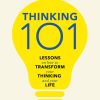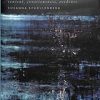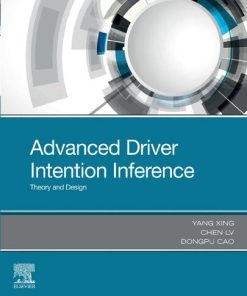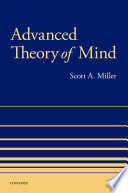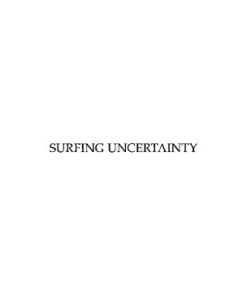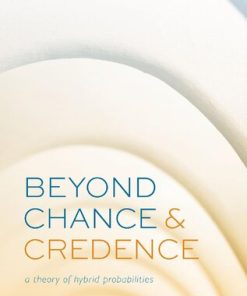Movements of the Mind A Theory of Attention Intention and Action 1st edition by Wayne Wu 0192692405 9780192692405
$50.00 Original price was: $50.00.$25.00Current price is: $25.00.
Movements of the Mind: A Theory of Attention, Intention, and Action 1st edition by Wayne Wu – Ebook PDF Instant Download/DeliveryISBN: 0192692405, 9780192692405
Full download Movements of the Mind: A Theory of Attention, Intention, and Action 1st edition after payment.
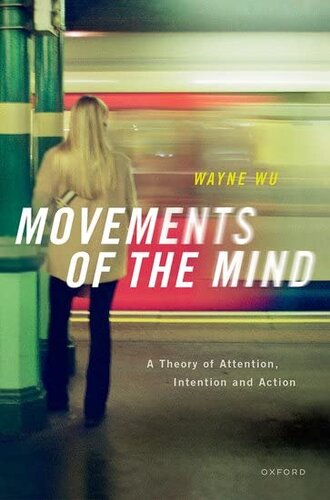
Product details:
ISBN-10 : 0192692405
ISBN-13 : 9780192692405
Author : Wayne Wu
Movements of the Mind is about what it is to be an agent. Focusing on mental agency, it integrates multiple approaches, from philosophical analysis of the metaphysics of agency to the activity of neurons in the brain. Philosophical and empirical work are combined to generate concrete explanations of key features of the mind. The book should be relevant and accessible to philosophers and scientists interested in mind and agency. Wu argues that actions have a core psychological structure where attention plays a necessary role in guiding the agent’s response and intentions function as memory for work, a practical memory. Attention and memory are accordingly central parts of an agent’s intentionally doing things. These claims are supported by synthesizing philosophical and empirical work to produce a theory of intention and attention in action. The account explains three phenomena of current philosophical interest: (a) the basis of positively and negatively biased action where attention often leads to implicit bias, (b) the dynamics of deductive reasoning as the focusing of a thinker’s cognitive attention and the development of cognitive skills, and (c) the psychology of introspective access to conscious perceptual experience, making clear when introspection can intelligibly fail and when it can succeed. The book provides a theory of agency, whether human or non-human, along with technical notions of automaticity and control, a theory of attention as selection to guide behavior, an account of intention as memory whose dynamics are revealed in empirical investigation of working memory, explications of sustained attention and vigilance, an explanation of biased behavior driven by biases on attention, normative aspects of attention as a skill, the role of learning in cognitive skill, a theory of deduction as a sharpening of attention, and a psychologically plausible model of introspection that speaks to its accuracy and reliability.
Movements of the Mind: A Theory of Attention, Intention, and Action 1st Table of contents:
Part I. The Structure of Action and Attention
1. The Structure of Acting
1.1 Introduction
1.2 The Selection Problem and the Structure of Acting
1.3 Intentions and Intentional Action
1.4 Control and Automaticity
1.5 The Necessity of Bias for Action
1.6 The Biology of Intention-Based Biasing
1.7 Intention-Based Biasing as Cognitive Integration
1.8 Learning to Act and Shifting Control
1.9 The Agent Must Be in Control in Action
1.10 The Agent’s Being Active
1.11 Taking Stock
2. Attention and Attending
2.1 Introduction
2.2 Merging the Psychology and Philosophy of Attention
2.3 Attention and the Selection Problem
2.4 Attention as Guide versus Attention as Mechanism
2.5 Perceptual Attending as Mental Action
2.6 Goal-Directed Automatic Attention and Bias
2.7 Attentional Capture and Passive Agency
2.8 How Much Attention Is There in the World of Action?
2.9 Action Is Necessary for Attention
2.10 On Different Lessons from Causal Deviance
2.11 Agentive Control and Guidance Revisited
2.12 Taking Stock
Part II. Intention as Practical Memory and Remembering
3. Intention as Practical Memory
3.1 Introduction
3.2 Memory in Action
3.3 Empirical Theories of Working Memory
3.4 Memory at Work
3.5 Vigilance
3.6 Steadfastness and Sustained Attention
3.7 Taking Stock
4. Intending as Practical Remembering
4.1 Introduction
4.2 The Continuity of Practical Memory
4.3 Practical Fine-Tuning
4.4 Fine-Tuning as Practical Memory at Work
4.5 The Dynamics of Thinking about Action, in Action
4.6 First-Personal Access to Intentional Action
4.7 On Keeping Time with Action
4.8 Taking Stock
Part III. Movements of the Mind as Deployments of Attention
5. Automatic Bias, Experts and Amateurs
5.1 Introduction
5.2 A Structure for Explaining Bias
5.3 Epistemic Bias Is Necessitated Bias
5.4 Overt Attending as Mental Bias
5.5 Epistemic Virtue in the Eye
5.6 Automatic Bias and the Distribution of Gaze as Good
5.7 Automatic Thinking in Fields of Thought
5.8 The Norms of Attention
5.9 Taking Stock
6. Deducing, Skill and Knowledge
6.1 Introduction
6.2 Deducing with Models
6.3 Formally Deducing and Learning Rules
6.4 Taking and Sensitivity
6.5 Skill and Knowledge
6.6 Knowledgeable Control and Practical Understanding
6.7 Taking Stock
7. Introspecting Perceptual Experience
7.1 Introduction
7.2 The Need to Carefully Define Introspective Tasks
7.3 Introspecting as Mental Action
7.4 Reliability Conditions for Simple Introspection
7.5 Complex Introspection and Blur
7.6 Introspection and Bad Cases
7.7 Taking Stock
People also search for Movements of the Mind: A Theory of Attention, Intention, and Action 1st:
what are the theories of attention
different theories of attention
what is broadbent’s theory of attention
mind of theory
movements of attention are
Tags: Movements, the Mind, Attention, Intention, Action, Wayne Wu
You may also like…
Engineering - Automotive
Advanced Driver Intention Inference: Theory and Design 1st Edition
Politics & Philosophy - Politics
Romance
Society
Politics & Philosophy
Politics & Philosophy - General & Miscellaneous Philosophy
Advanced Theory of Mind 1st edition by Scott Miller 0197573193 9780197573198
Politics & Philosophy - Anthropology
Beyond Chance and Credence: A Theory of Hybrid Probabilities 1st Edition Wayne C. Myrvold


